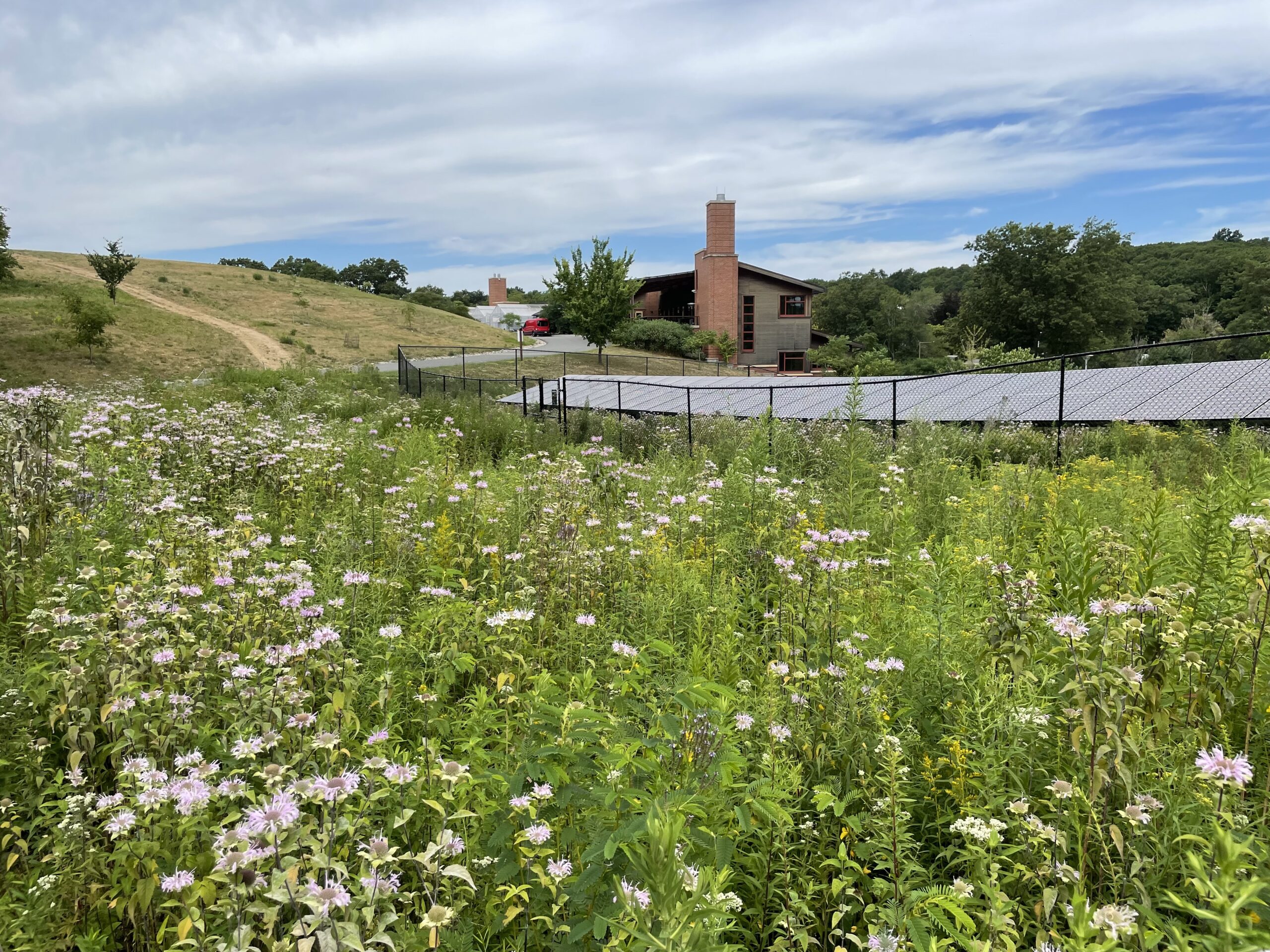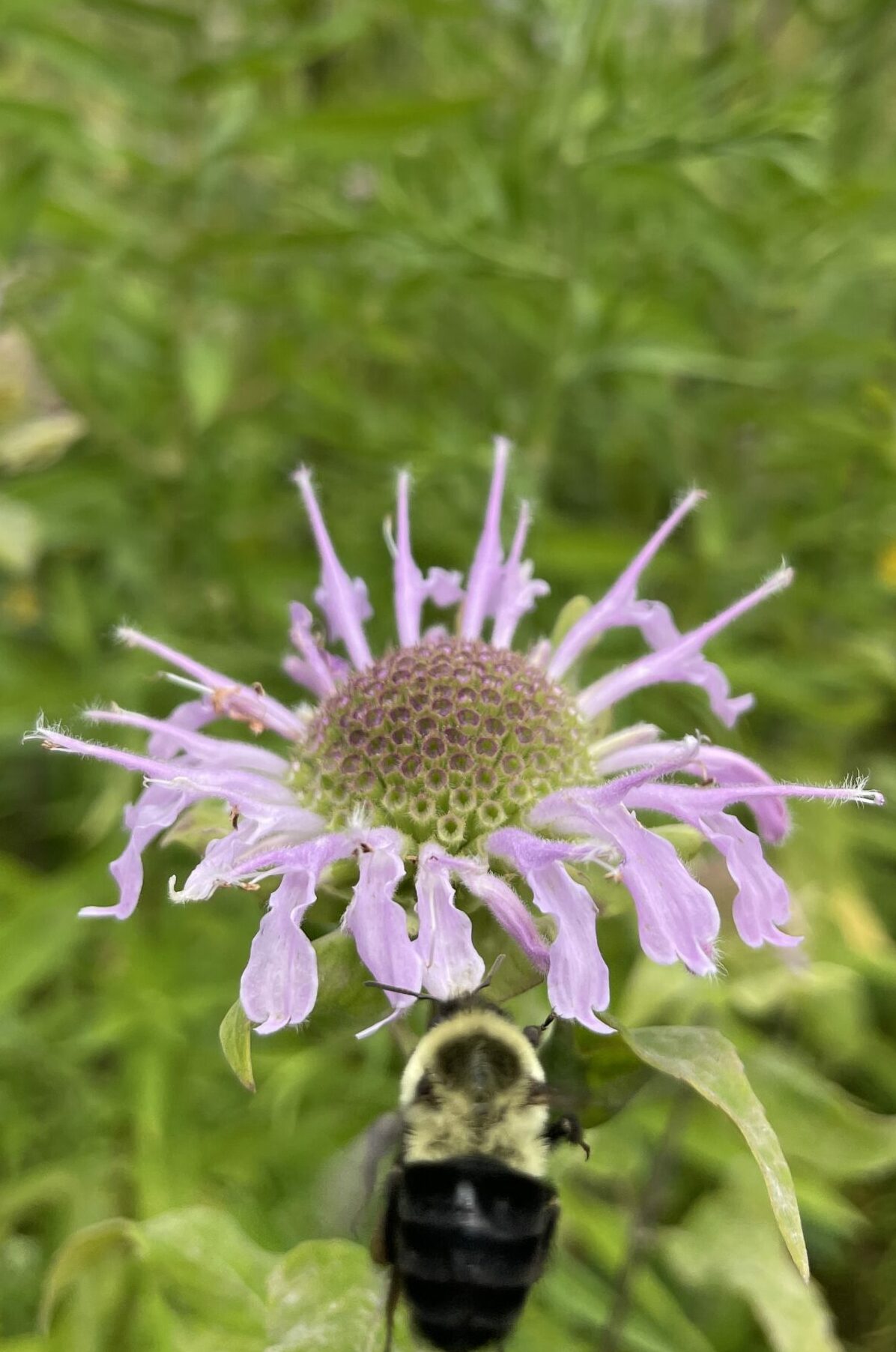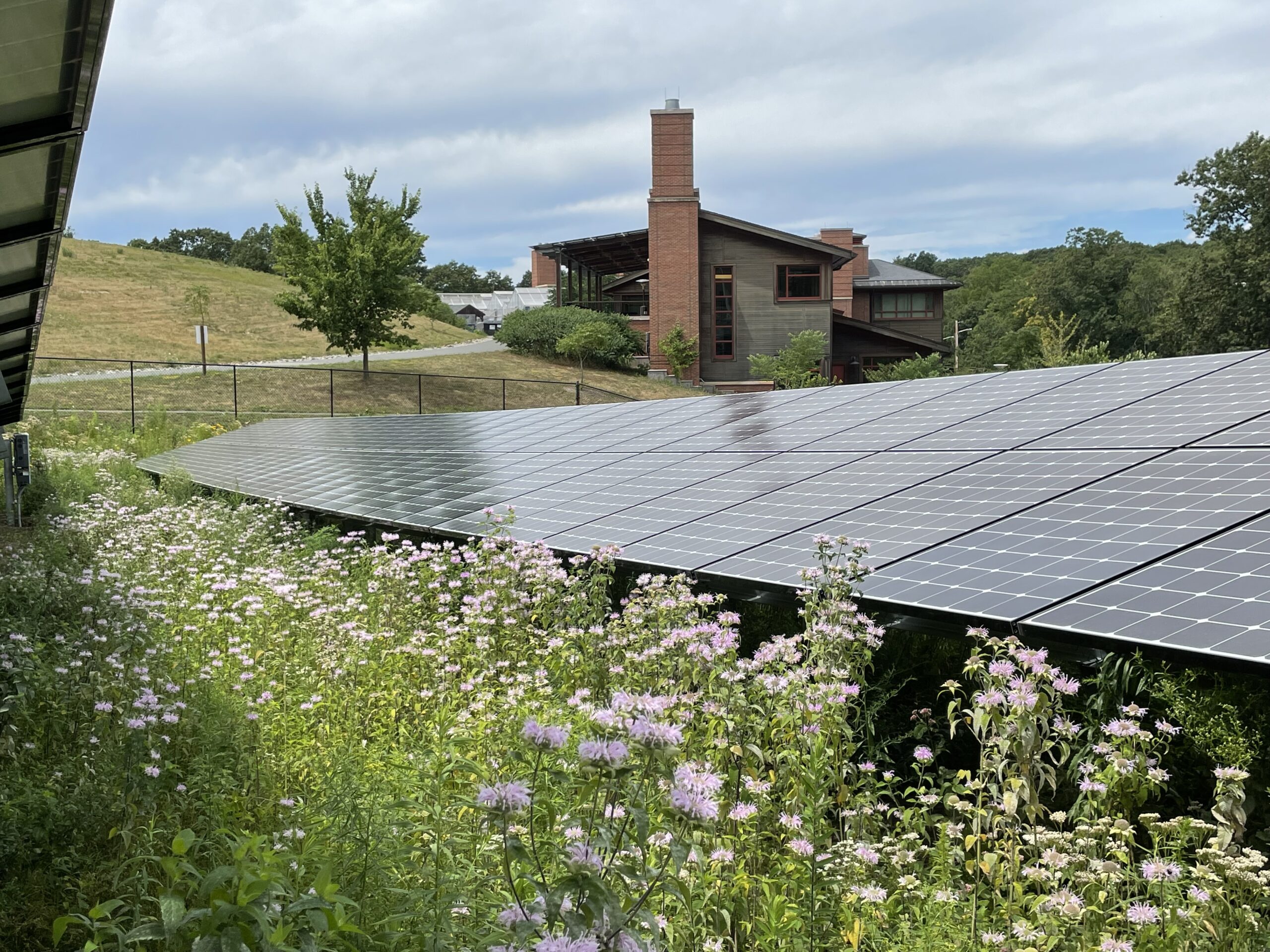Last year, the horticulture staff at the Arnold Arboretum of Harvard University planted a new pollinator meadow at the Arboretum’s Weld Hill Research and Administration Building. Wild-collected seeds of native perennials were sown beneath, between, and around an array of 1,152 solar panels, envisioned as an ecological and technological experiment. As these plants come into their own this season, the Weld Hill landscape champions two of the Arboretum’s key sustainability initiatives—increasing the capture and use of renewable energy and enhancing habitat for urban pollinators and other wildlife.

Now in its second growing season, the solar meadow at Weld Hill teems with more than 30 species of native, wild-collected flowers and grasses. This number will increase through additional plantings in over coming years. The variety of species sowed in the landscape ensures ready blooms for pollinators (and curious visitors) throughout spring, summer, and fall. Floral highlights include spectacular drifts of white yarrow (Achillea millefolium) and foxglove beard tongue (Penstemon digitalis), spires of blue vervain (Verbena hastata) and violet wild beebalm (Monarda fistulosa), and understory blooms of Virginia mountain mint (Pycnanthemum virginianum) and common boneset (Eupatorium perfoliatum).

As plant life has proliferated across the field, so has the traffic of visiting insects. For example, an early morning walk past the arrays showcases the dauntless industry of thousands of bumblebees gathering pollen and sipping nectar. Bumblebees tolerate cooler morning and evening temperatures than many other pollinators. They rise early, work late, and even sleep underneath flower petals at night.

As temperatures rise, honeybees, sweat bees, and a wide variety of wasps arrive in droves. Although wasps are carnivorous, they still rely on flowers for energy-boosting nectar, sometimes becoming inadvertent pollinators in the process. Ants scurry throughout the canopy of stems as well. Both ant and wasp species show a particular fondness for partridge pea (Chamaecrista fasciculata) and its extra-floral nectaries. These small nodes—also called nectar pots—exude droplets of nectar that attract carnivorous insects. These insects gather nectar and also help the plant by eating harmful insects such as aphids and caterpillars.



Monarch, swallowtail, and spotted skipper butterflies also appear in the solar meadow, as do various moths. We introduced many of our plant species specifically for their host value for butterfly and moth caterpillars. The meadow is already home to both common and rose milkweed (host plants for monarch caterpillars), and plantings of butterfly and poke milkweed are planned for the future.

Although the solar meadow is a bit off the beaten path for most Arboretum visitors (located at 1300 Centre Street, across the road from the Arboretum’s Walter Street Gate), it is nonetheless worth a visit. August days will showcase the bright yellows of licorice and grass-leaved goldenrod, white flat-topped aster, and the deep purples of the New England aster. In September, our downy, white, and wreath goldenrods and white and blue wood asters will begin popping. While there, visitors can also walk along a new mulched path (planned and installed this summer by the Arboretum’s horticultural interns), providing an enhanced perspective of Weld Hill’s unique plant collections. Keep an eye out for future pollinator-friendly plantings around the path, and across the Weld Hill landscape, in coming seasons.
